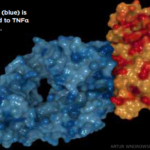
Jarun Ontakrai / shutterstock.com
Over the past few years, biosimilars and other new drugs have been introduced to treat rheumatic illnesses. Some of the conditions we treat have numerous drug options, others have few or only off-label options. This series, “Rheumatology Drugs at a Glance,” provides streamlined information on the administration of biologic, biosimilar and small molecule inhibitor drugs used to treat patients with rheumatic disease. In Part 3 of this series, we discuss the 21 available options to treat rheumatoid arthritis (RA; see Table 1, opposite).
RA
RA is a common chronic autoimmune disorder characterized by the simultaneous inflammation of the synovium of multiple joints that frequently leads to joint destruction, deformity, and disability.1,2 The estimated prevalence of RA increases with age in both sexes and is greatest in patients aged 40–70 years old. Productivity loss at work is associated with personal, clinical and work-related factors for patients with RA.3 At-work productivity loss is also negatively associated with health-related quality of life, especially in the areas of mental health, physical role limitations and pain.
Most of the joint damage that leads to disability begins early in the course of the disease.4,5 A prompt diagnosis and a treat-to-target approach with tight monitoring and control can increase the likelihood of remission in RA patients.6 Strategies to achieve remission and/or low disease activity include initiating disease-modifying anti-rheumatic drug (DMARD) therapy early in the disease course to slow and prevent joint damage. Biologic therapies have been a significant advancement and improved the overall management of RA.
Nonpharmacologic therapies and preventative measures for patients with RA include patient education; psychosocial interventions; nutritional and dietary counseling; interventions to reduce the risks of cardiovascular disease, including smoking cessation and lipid control; screening for and treatment of osteoporosis; and immunizations to decrease the risk of infectious complications of immunosuppressive therapies.
The goals of treatment are to improve patients’ quality of life, reduce functional limitations, prevent joint damage and decrease disease complications. Treatment decisions should be made by the healthcare team and patients through a shared decision-making process, taking into account patients’ values and preferences, as well as their co-morbidities. It’s important to select the best therapeutic option for and with the patient to improve adherence and allow the patient to attain the highest level of satisfaction.
RA treatments can be expensive, and healthcare providers can help make treatment costs more manageable for patients. A number of financial assistance resources are available to patients, and patients can also contact the manufacturers to request co-pay assistance. Your staff can also explore patient assistance programs for those who do not have insurance (https://www.rheumatoidarthritis.org/resources).7
Depending on a patient’s healthcare coverage and the medication(s) they use, a specialty pharmacy may dispense the medications. Most specialty pharmacies have clinical pharmacists available who can help patients manage insurance issues, provide drug monitoring for adverse effects, effectiveness and adherence issues, and serve as a drug information resource.
For additional information, review the ACR’s published RA guideline.1 The ACR anticipates publishing an updated guideline in late 2019/early 2020.



